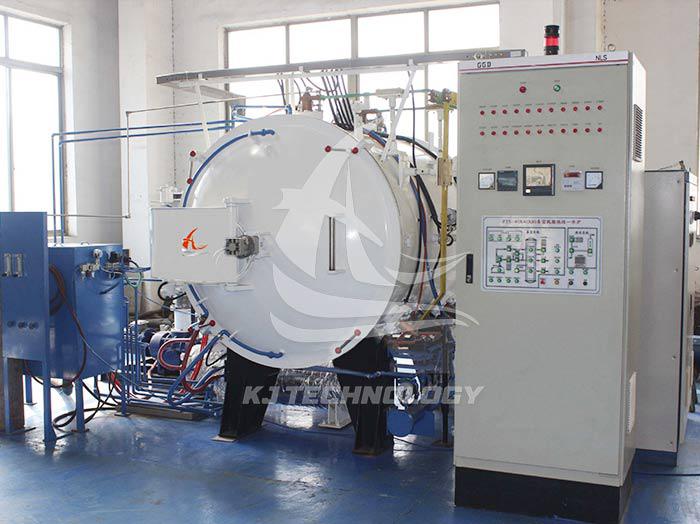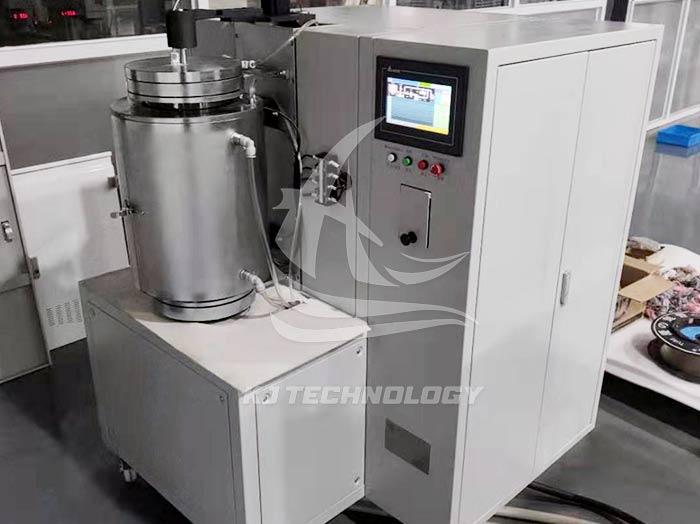What processes can be carried out in electric heating vacuum heat treatment furnaces?
 08-14-2025 Author: KJ technology
08-14-2025 Author: KJ technology
The electric heating vacuum heat treatment furnace combines the advantages of vacuum technology and electric heating, and can achieve various heat treatment processes and special processing. The specific processes are as follows:
1. Basic heat treatment process
annealing
Function: Reduce hardness, improve cutting performance, eliminate internal stress, and refine grain size.
Application: Annealing of high-temperature alloy blades in the aerospace field, avoiding surface oxidation and maintaining material purity through a vacuum environment.
quenching
Medium selection: Supports various methods such as gas quenching (nitrogen, argon), oil quenching, nitrate quenching, water quenching, etc.
Advantages: Non oxidative decarburization, high surface smoothness. For example, after quenching with real air, the surface roughness of car gears can reach Ra0.2 μ m or less, and no further polishing is required.
Deformation control: Radiation heating reduces the temperature difference inside the workpiece, and the flatness deviation of thin-walled parts (such as 1mm thick 304 stainless steel sheets) after quenching is ≤ 0.05mm.
tempering
Function: Eliminate quenching stress, stabilize dimensions, and improve toughness.
Application: After tempering, the hardness uniformity of mold steel is improved, and the service life is extended by more than 30%.
Solution treatment and aging treatment
Solution treatment: Heating the alloy to a high-temperature single-phase zone to dissolve the excess phase, and obtaining a supersaturated solid solution after rapid cooling.
Time treatment: Maintain the temperature at which the strengthening phase precipitates, allowing the strengthening phase to precipitate and improve strength.
Application: After solid solution and aging treatment, the creep resistance of GH4169 high-temperature alloy is improved by 20%.
2. Chemical heat treatment process
Carburizing and nitriding
Vacuum carburizing: Injecting carbon into the surface of steel in a vacuum environment to improve surface hardness and wear resistance.
Vacuum nitriding: Non oxidizing nitriding is achieved through ion bombardment or high-temperature decomposition of ammonia gas, with a surface hardness of over 1000HV.
Multi element infiltration: such as carbon nitrogen infiltration, can simultaneously improve hardness, wear resistance, and fatigue strength.
quenching and tempering
Process combination: Quenching+High temperature tempering to obtain tempered martensite structure.
Application: Connecting rods, bolts, and other components subjected to alternating loads have better mechanical properties after quenching and tempering than the normalized martensite structure.
3. Special processing technology
vacuum brazing
Principle: Heat the brazing material to the melting temperature in a vacuum environment, and use the diffusion effect between the liquid brazing material and the base metal to achieve connection.
Advantages: No oxidation, no porosity, and the weld strength reaches over 90% of the base metal.
Application: Welding of complex structural components such as aviation titanium alloy frames and automotive radiators.
Vacuum sintering
Function: Heating powder or compact under vacuum conditions to promote particle bonding and improve strength.
Advantages: thorough degassing, material density of over 99%.
Application: Preparation of hard alloy cutting tools and ceramic bearings.
Vacuum degassing and purification
Degassing effect: During vacuum heating, residual gases (H, N, CO, etc.) escape from steel parts, improving their mechanical properties.
Purification effect: Remove impurities such as oxide film and rust on the metal surface, and obtain a smooth surface.
Application: Preprocessing of high-precision molds and semiconductor devices.
vacuum coating
Principle: Deposition of thin films through physical or chemical methods in a vacuum environment.
Advantages: Uniform film layer, strong adhesion, significantly improved wear resistance and corrosion resistance.
Application: TiN coating on tool surface, anti reflective film for optical devices.
4. Industry exclusive craftsmanship
aerospace field
High temperature alloy treatment: vacuum solution+aging treatment to enhance high temperature resistance.
Sintering of ceramic based composite materials: Vacuum environment promotes material densification and reduces porosity.
Semiconductor Manufacturing
Silicon wafer diffusion and oxidation: Vacuum environment reduces pollution and improves integrated circuit yield.
Packaging and testing: Vacuum brazing achieves high-precision seamless connection.
Manufacturing of electronic components
Integrated circuit soldering: Avoid oxidation in a vacuum environment and improve conductivity.
Transistor heat treatment: precise temperature control to ensure device stability.
Powder metallurgy field
Preparation of nanomaterials: Vacuum environment promotes uniform growth of nanoparticles and avoids agglomeration.
Metal powder pressing and sintering: producing high-density, high-performance metal products.








